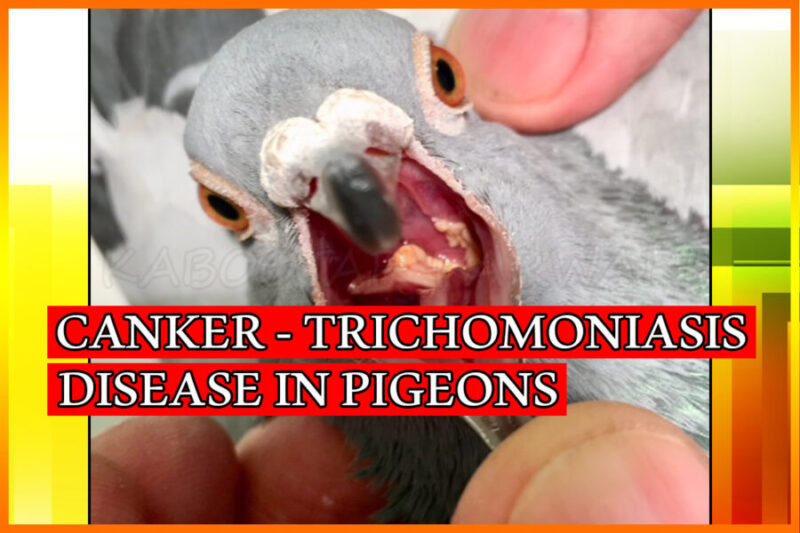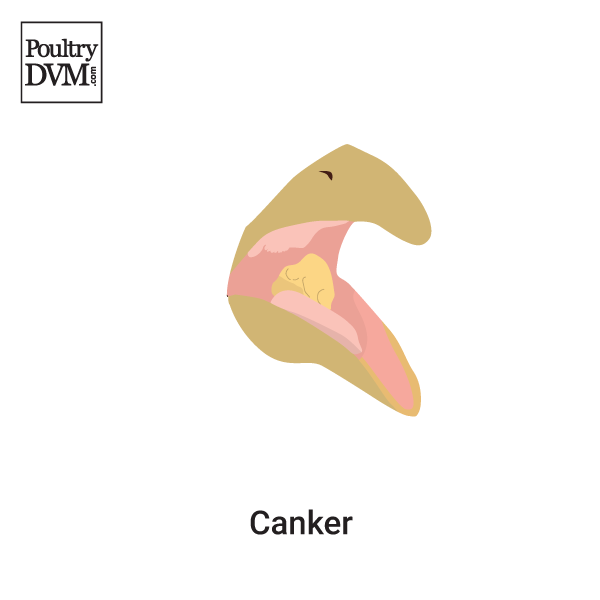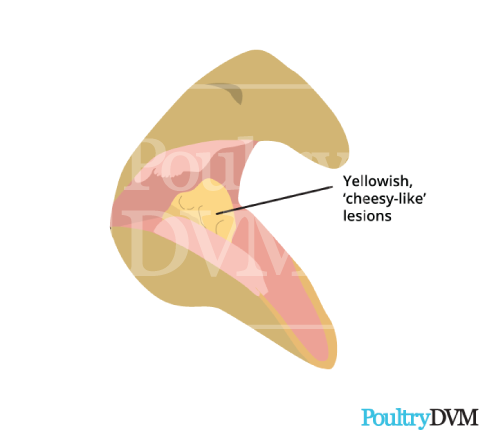Canker In Wild Birds unique rare bird

Canker in Pigeons Pigeon Health Episode 3 YouTube
Parrots have salivary glands, but the distribution of saliva is different than in mammals. If a parrot is drooling, it may be due to canker or a digestive issue. A canker is an ulcerous condition that affects the mouth, throat, sinuses, esophagus, and other internal organs. You won't find a parrot drooling, as surplus saliva shouldn't be in.

PIGEON CANKER / ZEHERBAD & PIGEON POX TREATMENT & PREVENTION YouTube
Canker (Trichomoniasis) in Budgerigars. Canker, also known as Trichomoniasis, is a common disease that affects budgerigars and other birds.The disease is caused by a protozoan parasite, which burrows into the lining of the upper digestive tract, including the oesophagus and crop, causing ulcerating sores.

Abscess in chicken's cheek and mouth. Canker remedies? BackYard Chickens Learn How to Raise
Canker, also known as trichomoniasis, is one of the most common diseases that affect pigeons, whether racing birds or not.. Canker actually affects other species, including common poultry such as chickens. Read on to find out more about what causes canker in pigeons, its symptoms, how contagious it is, and if it can be treated.

How To Treat Canker in Pigeons Kabootar Parwari
The most common cause of what looks like drooling in wild birds is a condition called canker. This needs experienced veterinary treatment as soon as possible, the condition causes lesions in the throat, windpipe and inside the beak and can infect the sinuses too. It is commonly found in pigeons, garden birds and birds of prey.

How to cure Paramixo virus and throat canker ILLNESS pigeons kabooter with Amoxil Medicine
Birds with internal canker nodules usually display non-specific signs of illness, including weight loss, lethargy, reluctance to eat and green diarrhoea. Control of canker during the breeding season correct medication is vital during the breeding season so that the level of natural immunity in the weaned youngster is as high as possible.

Canker In Wild Birds unique rare bird
We've Got Your Back With eBay Money-Back Guarantee. Enjoy Bird Canker You Can Trust. But Did You Check eBay? Find Bird Canker on eBay.

Canker in Pigeons Trichomoniasis Prevention Tips Pigeonmania
Trichomonas gallinae is a cosmopolitan parasite of birds including finches, pigeons, doves, turkeys, chickens, parrots, raptors (hawks, golden eagle, etc.).The condition in birds of prey is called frounce. It is believed to be an ancient pathogen causing frounce-like symptoms in theropod dinosaurs. The same condition in pigeons is commonly called canker..

Oral Canker Hen Health British Hen Welfare Trust
Trichomonosis is an emerging disease in songbirds and continues to be important disease for doves, pigeons, and raptors. Good sanitation of bird feeders and waterers is imperative to minimize transmission. Learn about the veterinary topic of Trichomonosis. Find specific details on this topic and related topics from the Merck Vet Manual.

Canker Pigeon And Dove Rescue UK
Pigeon Canker. G. D. Butcher. Trichomoniasis (pigeon canker) is the most common disease of pigeons. Approximately 80 percent of pigeons are infected with this organism. The organism is a microscopic flagellate classified as a protozoan. Different strains, Trichomonas gallinae or Trichomonas columbae, vary greatly in their ability to cause disease.

How To Prevent Trichomoniasis Or Canker Corvid Blog
Avian trichomonosis (also known as 'canker' or 'frounce') is an infectious disease of birds caused by the flagellate protozoan parasite Trichomonas gallinae. The disease is extremely common in domestic and wild pigeons and doves (approximately 80-90% are carriers) worldwide. Chickens usually become infected through sharing a water or feed source with domestic or wild pigeons and doves.

How to remove Canker/ Canker Treatment using natural/ Pigeon tips YouTube
Birds with canker are typically lethargic with puffed up feathers and too weak to fly. As the infection usually affects the beak, throat, crop and oesophagus birds have difficulty eating, drinking and swallowing. This can result in regurgitation leading to starvation and sometimes choking. The disease can progress rapidly and is characterized.

Canker (trichomonosis) in Chickens
Here's what you need to know about treating canker in birds. Canker is caused by a protozoan called Trichomonas gallinae. This protozoan is found in the mouth, throat, and crop of infected birds. Canker is spread through contact with contaminated food or water, or through contact with an infected bird. Birds with canker may have greenish.

Drooling & canker in birds Knoxwood Wildlife Rescue Trust Knoxwood Wildlife Rescue Trust
Canker spreads through direct bird-to-bird contact, feeding young squabs, contaminated food and water, and external vectors like insects. Preventive measures include quarantining new birds, regular cleaning, disinfecting, proper loft layout, and monitoring bird health. Treatment often involves medications like Metronidazole.

Canker (trichomonosis) in Chickens
Trichomonosis is the name given to a disease caused by the protozoan parasite Trichomonas gallinae. It has been recorded in a number of garden bird species and is widely acknowledged to be the causal factor in the rapid decline of the British Greenfinch population that was first noted in late summer 2006. The disease is also known as 'canker.

Canker Pigeon And Dove Rescue UK
Bird Species and Diseases They are Most Susceptible to. The avian disease Trichomoniasis is also commonly referred to as "pigeon canker" or simply "canker"or "roup," and, in hawks, it is known as "frounce.". The organism "Trichomonas gallinae" lives in the sinuses, mouth, throat, esophagus and other organs. This disease.

Canker in birds / dangerous diseases and its treatment YouTube
Additionally, young birds and chicks should be treated with Ronidazole (which has a wide safety margin) for 3-5 days after they've weaned from the parents. Canker flare-ups can also occur during periods of high stress such as racing, showing, transporting, and breeding.